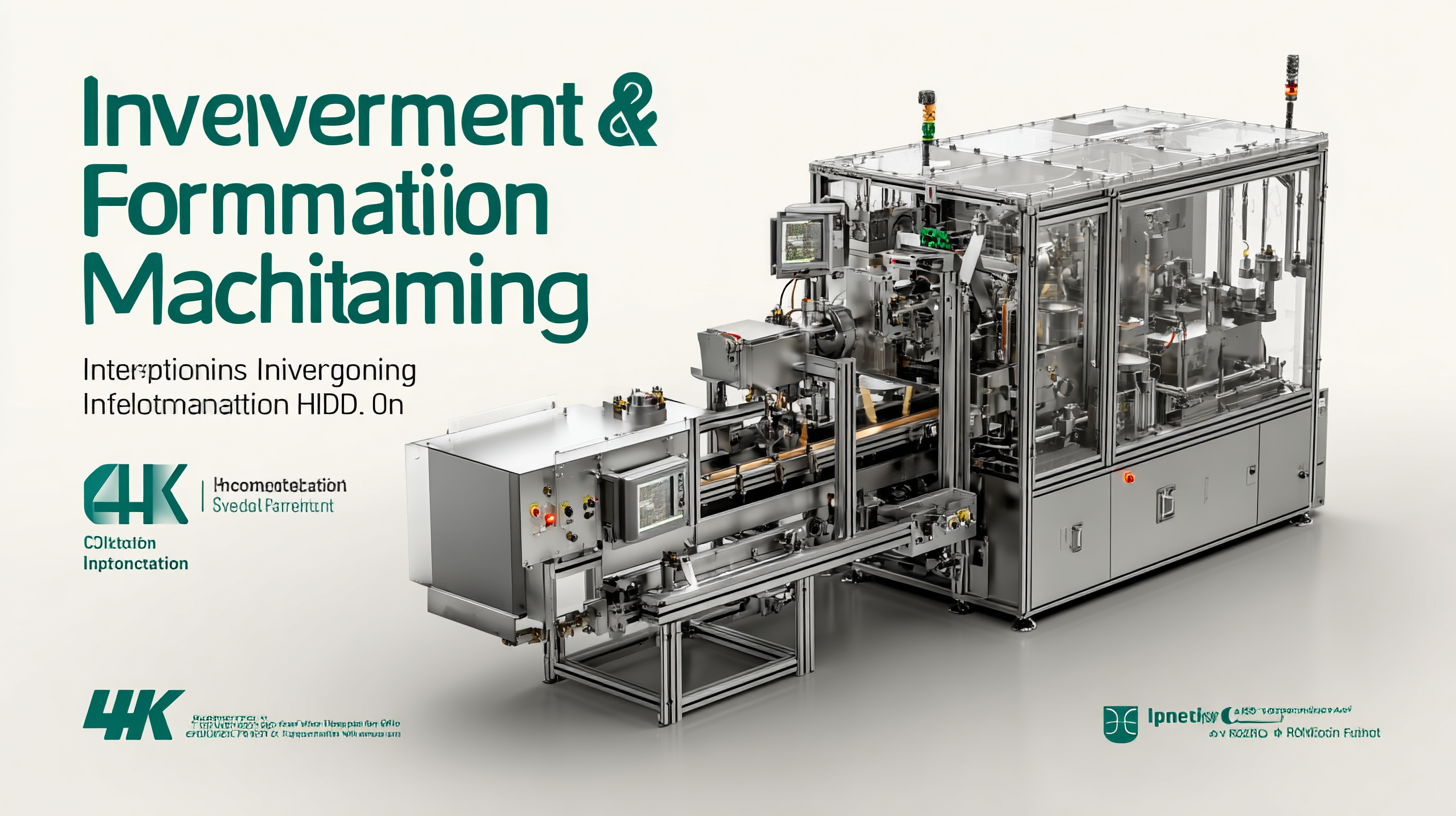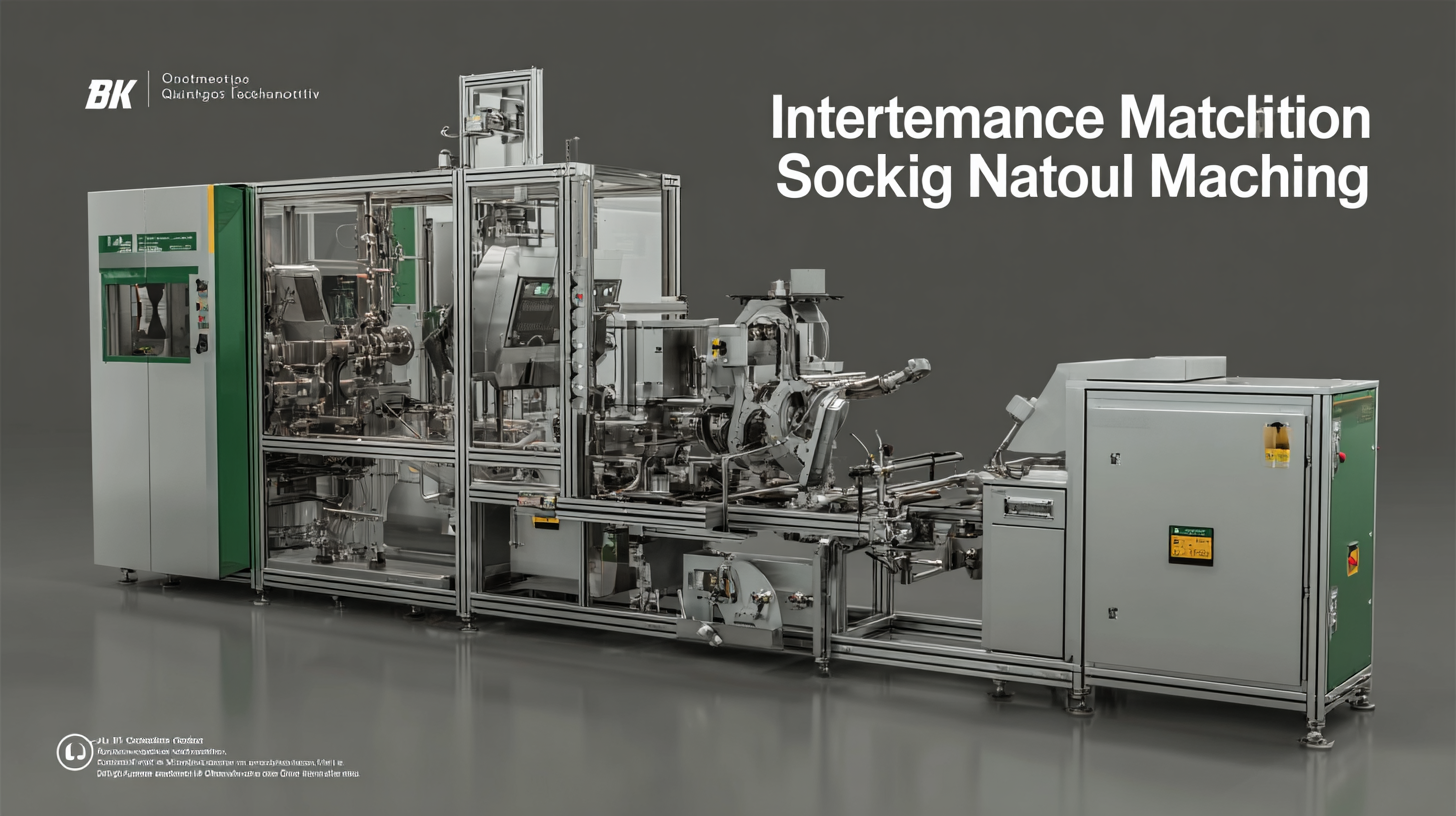Innovative Solutions for Efficient Intermittent Motion Packaging Machinery
In the fast-paced world of manufacturing and packaging, the demand for efficiency and precision has never been more critical. According to a recent industry report by Smithers Pira, the global packaging machinery market is expected to reach approximately $60 billion by 2025, driven by innovations in technology and increased consumer demand for sustainable packaging solutions. One key player in this arena is the
Intermittent Motion Packaging Machine, which is celebrated for its ability to perform discrete actions with high reliability and speed. By offering innovative solutions tailored to diverse packaging needs, these machines reduce waste and operational costs while maximizing throughput. As businesses strive to optimize their packaging processes, understanding the capabilities and advantages of intermittent motion technology becomes essential for achieving sustainable growth in this competitive market.

Trends Shaping the Future of Intermittent Motion Packaging Machinery by 2025
The landscape of intermittent motion packaging machinery is evolving rapidly, driven by technological advancements and changing market demands. According to a report by MarketsandMarkets, the global packaging machinery market is projected to reach $70 billion by 2025, with intermittent motion systems playing a pivotal role in this growth. These systems are favored for their efficiency in handling a variety of packaging tasks, from food and beverages to pharmaceuticals, thus catering to a diverse range of industries.

One significant trend shaping the future of intermittent motion packaging machinery is the integration of automation and smart technology. Industry experts predict that by 2025, around 50% of packaging machinery will incorporate IoT capabilities, allowing for real-time data monitoring and enhanced operational efficiency. This shift not only improves productivity but also enables manufacturers to maintain high levels of quality control, responding swiftly to consumer demands and minimizing waste. As sustainability becomes a core value in packaging, companies are increasingly looking to adopt machinery that not only meets production needs but also aligns with eco-friendly practices.
Key Innovations Driving Efficiency in Packaging Technologies for 2025
As we move towards 2025, the packaging industry is undergoing a significant transformation driven by advanced technologies that enhance efficiency and sustainability. Packaging 4.0 is characterized by the integration of artificial intelligence (AI), the Internet of Things (IoT), blockchain, and robotics, each contributing uniquely to the modernization of packaging machinery.
AI algorithms streamline operations by optimizing processes and predicting maintenance needs, thus reducing downtime. IoT devices enable real-time data collection and monitoring, allowing packaging lines to be dynamically adjusted for maximum performance.
Blockchain technology enhances transparency and traceability throughout the supply chain, providing stakeholders with reliable information about product origins and handling. Meanwhile, robotics facilitates automation, improving speed and accuracy in packaging operations.
As these innovations converge, they pave the way for smarter, more efficient packaging solutions that meet the evolving demands of consumers and businesses alike. The future of packaging promises to be not only faster but also more sustainable, aligning with global efforts to reduce waste and improve environmental impact.
Comparative Analysis of Leading Intermittent Motion Packaging Machines
In the realm of packaging technology, intermittent motion packaging machines have gained significant traction due to their adaptability and efficiency across various industries. A comparative analysis of the leading machines in this sector reveals that models such as those from Bosch, Barry-Wehmiller, and Omori demonstrate notable advancements in speed and precision. According to a recent industry report, these machines can enhance production rates by up to 20% while reducing material waste by nearly 15%, making them pivotal for businesses aiming to optimize their packaging processes.
One essential tip for selecting the right intermittent motion packaging machine is to evaluate specific throughput requirements. Machines like Bosch’s Sigpack series offer flexibility in speed adjustments, allowing manufacturers to cater to differing product types without compromising efficiency. Additionally, incorporating smart technology features can lead to predictive maintenance, which 39% of manufacturing experts agree improves overall machinery lifespan and performance, according to a recent survey.
Moreover, while considering cost-effectiveness, it’s crucial to assess the total cost of ownership rather than just the purchase price. For instance, machines that integrate energy-efficient designs can significantly reduce operational costs over time. As an industry report suggests, companies can save up to 25% on energy expenses by adopting such innovative solutions, reinforcing the importance of long-term investment in quality machinery.
Innovative Solutions for Efficient Intermittent Motion Packaging Machinery
This chart compares the efficiency and output speed of different intermittent motion packaging machines. The data represents the average output speed (in packages per minute) across five leading technologies.
The Role of Automation in Revolutionizing Packaging Efficiency
In today's fast-paced production environment, automation is playing a pivotal role in enhancing the efficiency of intermittent motion packaging machinery.
 Automated systems streamline processes by reducing manual intervention, leading to increased accuracy and speed. By introducing robotics and smart sensors into packaging lines, manufacturers can now achieve higher throughput while maintaining quality and reducing waste. This transformation not only boosts productivity but also creates a safer work environment for employees.
Automated systems streamline processes by reducing manual intervention, leading to increased accuracy and speed. By introducing robotics and smart sensors into packaging lines, manufacturers can now achieve higher throughput while maintaining quality and reducing waste. This transformation not only boosts productivity but also creates a safer work environment for employees.
Tip: When integrating automation into your packaging process, assess the compatibility of new technologies with existing machinery to ensure seamless operation.
Another significant advantage of automation is its ability to collect data in real time. This data can be utilized to optimize machine performance, predict maintenance needs, and respond proactively to any operational challenges. The analytical capabilities provided by automated systems enable manufacturers to make informed decisions, ultimately enhancing workflow and supporting sustainable practices.
Tip: Invest in training for your workforce to effectively utilize the data generated by automated systems for continuous improvement in your packaging processes.
Sustainability Considerations in the Evolution of Packaging Machinery
Sustainability has become a critical focus in the evolution of packaging machinery, particularly for intermittent motion systems. According to recent industry reports, nearly 75% of packaging companies are prioritizing eco-friendly technologies to meet growing consumer demand for sustainable products. This trend not only aligns with environmental regulations but also helps companies reduce their carbon footprints and waste. For instance, utilizing advanced servo motors and energy-efficient drives can lead to a 30-50% reduction in energy consumption compared to traditional machinery.
Moreover, the integration of recyclable and biodegradable materials in packaging processes is increasingly influencing machinery design. A study from Smithers Pira indicates that the global market for sustainable packaging is expected to reach $450 billion by 2027, driven by increased consumer awareness. As packaging machinery evolves, manufacturers must adapt to these new materials, ensuring their equipment can handle various types of sustainable substrates while maintaining production efficiency. This adaptation not only satisfies sustainability goals but also offers a competitive edge in a rapidly changing market landscape.
